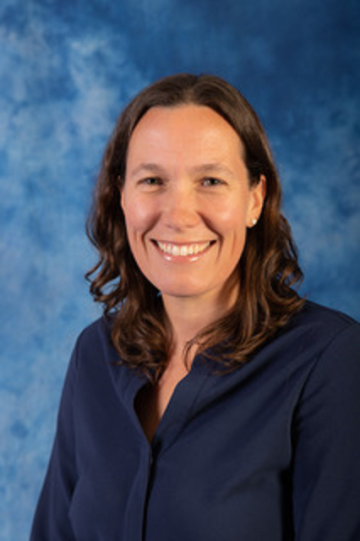Steph Halmhofer


About me
I was born/grew up in: Steveston, British Columbia, Canada
I now live in: Ottawa, Ontario, Canada
I completed my training/education at:I first earned a degree in Criminology from Kwantlen Polytechnic University. I then split a degree in Physical Anthropology and First Nations Studies between the University of British Columbia and the University of Alberta.
I study human skeletal remains from archaeological sites (also known as osteoarchaeology). I look for evidence of age, sex, height, disease, trauma, modifications/variations, nutritional defects, and work/stress-related abnormalities to develop a profile of what peoples lives were like in the past.
What I do at work
The great thing about my work is that every day is different. Sometimes I'm working in the lab. I'll be photographing and cataloging artefacts from a variety of different sites, or I'll be working with skeletons building their profiles. Through my knowledge of the human skeletal system and basic medical sciences I can put together a profile that will include age, sex, height, and any medical conditions that person may have suffered from, sometimes through DNA studies but mostly through visually looking at the skeletons. I can also get a good idea of what kind of job they had, what kind of food they ate, and what kind of status they held in their community. When I’m not in the lab I'll be out in the field with my trusty trowel, screen, and shovel. Sometimes I’m out surveying the forests and beaches for archaeological materials.
Other days I’m on a construction site, monitoring the construction activities. If there is a known archaeological site on that property I need to be able to communicate with the construction workers to make sure that site does not get destroyed. I also need to be able to identify archaeological materials where there is no known site and communicate with the construction workers if they need to stop their work or if they are allowed to continue. And finally, sometimes I get to excavate an archaeological site. I have to be able to not only decide where my team and I are going to dig our units and how deep they will be, but also be able to identify the artifacts and features we uncover. By the end of the excavation and study of the artifacts we uncover we have a great understanding of what that site was used for and what it meant for the people who lived there in the past.
My career path is
When I began my post-secondary education I had absolutely no idea what bioarchaeology was. I had every intention of becoming a police officer. Part way through my Criminology degree I had the opportunity to take classes in forensic anthropology and archaeology and I suddenly knew exactly what I wanted to be doing with my life. Bioarchaeology (or physical anthropology at most universities) is a tough educational route to follow. Not many post-secondary institutions offer enough courses in physical anthropology to specialize in it. Beyond that, hands-on experience is incredibly important and extremely difficult to find!
I had some great professors who offered me a lot of advice along the way and through that I was able to find the education I wanted. I was also given many opportunities for hands-on training through field schools and jobs, both paid and voluntary, in archaeology laboratories. It was a long, sometimes frustrating road, but in the end I managed to get into the career I loved.
I am motivated by
Being a bioarchaeologist allows me to learn about people’s lives in the past from the very people who lived them! Your skeleton records your entire life story and it’s always very exciting to learn. I get to meet so many different people and learn about so many different lives just through their skeletons. I also get to see the products of their lives through the many different artifacts they leave behind.
Imagine being the first person to see an arrowhead or a basket or a carving in 5000 years. Or meeting people who lived 3000 years ago. How cool is that?! Being an archaeologist is a physically challenging career, but there is nothing I would change about it. If you’re like me and enjoy being outside, travelling to amazing locations, don’t mind getting dirty, and you like working in a team, than archaeology might be the job for you!
How I affect peoples’ lives
My career can have great impacts on other people’s lives. Sometimes a First Nations community wants to better understand where and how their ancestors lived, sometimes for legal purposes. Other times my work can greatly affect a construction project, whether it is a house or a massive building. I need to be able to make my decisions confidently and knowledgeably to ensure that if my work does impact someone else it’s for the right reasons.
Outside of work I
Outside of work I enjoy reading and watching movies while I recover from some physically tough days in the field. I also really enjoy horseback riding, hiking, kayaking, gardening, and hanging out with family and friends.
My advice to others
Don't give up! Challenges arise for all of us. Archaeology is a field where practical hands-on experience counts for a lot. Volunteering your time is a fantastic way to get your foot in the door and learn about the challenges you'll face in the field and how to overcome them.
- Art
- Computer Science
- History
- Native Studies/Languages
- Science
- Other: Criminology
- Enjoyed doing things on my own
- Liked helping people
- Organized activities for my friends
- Enjoyed working with my hands
- Liked being given free range to explore my ideas
- Liked reading
- Played video games
- Felt great satisfaction in getting good grades
- Didn't really care about grades
- Wasn't sure what I wanted to do
- Learned best by doing





